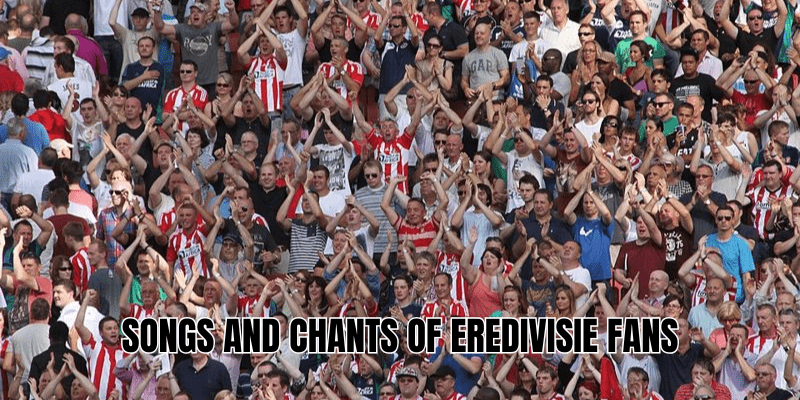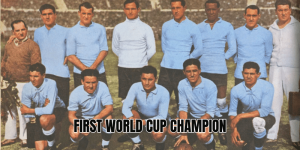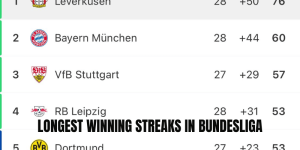From the moment the referee’s whistle pierces the air in De Kuip, Philips Stadion, or Johan Cruijff ArenA, the stadium reverberates with more than just passion — it echoes a centuries-old tradition of songs and chants of Eredivisie fans. In this article, AnnuGoal invites you behind the terraces: into the heart of Dutch ultras culture, where every melody, chant, and rhythm pulses with identity, rivalry, and devotion.
The roots of chanting culture in Dutch football
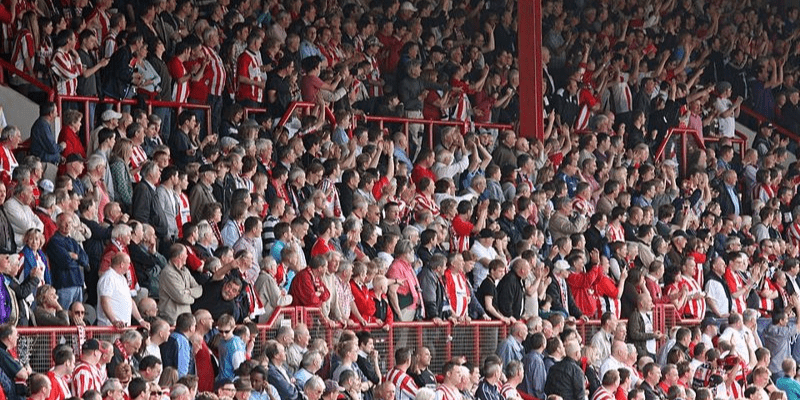
Chanting in Dutch football didn’t emerge overnight — it’s woven into the social fabric of supporters’ culture, evolving through decades. While the Netherlands was slow to adopt the full-on ultra culture of southern Europe, by the 1970s and 1980s, club songs and terraces chants began to take shape. The use of drums, harmonies, and collective songs became standard, especially in clubs like Ajax, Feyenoord, and PSV.
An iconic early example of this crossover was “We Gaan Naar Londen”, recorded by Willy Alberti and Ajax supporters ahead of their 1971 European Cup final run. That union of popular song and club identity set the precedent for the close bond between Dutch music culture and football fandom.
Over the years, each club developed its own repertoire of war cries, anthems, and taunts — many of which are catalogued today in chant archives that list hundreds of Eredivisie fan songs. (Some archives count over 550 distinct chants across clubs)
These songs and chants of Eredivisie fans serve several key functions:
- Identity & belonging — affirming “us against them”
- Atmosphere creation — setting mood and energy
- Psychological warfare — to unsettle rivals or referees
- Tradition & memory — preserving club lore and history
Now let’s explore how different clubs use their voice in song.
Signature chants.

Ajax Amsterdam
- “Ajax-mars” — the official club song dating back to 1918 became a foundation of fan culture. Its performance at home games is ritualistic, marking the start of the spectacle.
- “Ajax, Olé Olé Olé” — Willy Alberti again tapped into the singing fan culture by releasing this as a single in 1969, inviting the crowd to take its chorus into stadiums.
- “We Gaan Naar Londen” — beyond its historical significance, this chant remains embedded in club mythology, evoking glory days and tight bonds between fans and players.
Outside those, you’ll also hear chants about star players, taunts toward rivals, and rhythmic clap-songs — often blending English hooks with Dutch lyrics.
Feyenoord
Feyenoord supporters are known for their intense, raw vocal style. Among their staples:
- “Super Feyenoord” — a rousing declaration of support, sung across many matches.
- “Feyenoord wij houden van die club” — literally “Feyenoord, we love that club,” used to reinforce undying loyalty regardless of results.
- They also adopt universal chants like “You’ll Never Walk Alone”, but twist lyrics into local dialect, making it their own.
PSV Eindhoven
PSV fans often mix proud industrial identity with football chants:
- “Eindhoven!” — a concise anthem, repeated to stamp city identity into the football space.
- “PSV zit in mijn hart” (“PSV is in my heart”) — a classic heartfelt chorus showing emotional connection.
- Others revolve around matchday rituals, mocking rivals, or celebrating club colors.
Common themes & structures across the Eredivisie
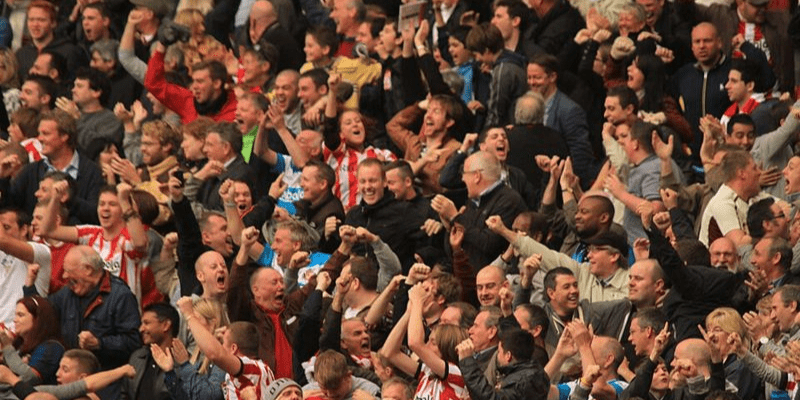
Although each club tailors its voice, some patterns recur across Dutch stadiums when it comes to songs and chants of Eredivisie fans:
- Call-and-response format — a lead cantor starts a line; the crowd echoes or answers.
- Short, repetitive hooks — easy to memorize and sing en masse.
- Incorporation of local dialects — elevating local identity (Rotterdams, Brabants, etc.).
- Bridging old and new — classic club songs sit beside modern versions or remixes.
- Borrowing & adaptation — English football chants or pop melodies get Dutch lyrics or altered rhythms.
Because of this structure, even casual visitors can pick up and join in — that’s part of the magic.
Examples of widely known chants
Here are a handful of chants that transcend club borders or have become especially prominent:
- “Wij Houden Van Oranje” — though originally tied to the national team, this chant/melody is often in fans’ ears and hearts even at club games.
- “Seven Nation Army” chorus — a global football staple adapted into Dutch terraces during both club and Oranje matches.
- “Hup Holland Hup!” — again national in origin but sturdy in local usage too.
- “Grunn’s Laid” —.
- “Welkom In De Hel Van Enschede” — for FC Twente, equates their stadium with a fortress hell, taunting opponents.
These chants connect fans not just to the club but to a shared football culture in The Netherlands.
How chants evolve — trends of the 2020s
Chant culture in the Eredivisie isn’t frozen in time. The 2020s have brought changes:
- New songs emerge seasonally — clubs often encourage fans to compose chants around new players or historic matches. For example, in 2025 Ajax fans introduced “Drie Gouden Sterren” celebrating three championship stars.
- Digital sharing & harmonization — chants spread rapidly.
- Melodies from pop & dance crossover — recent chants borrow.
- Sharper taunts & rivalry choruses — fans increasingly use chants to mock rival clubs in witty or biting fashion.
- Professionalization — some clubs now coordinate chants, distributing lyric sheets or projecting words to keep fans in sync.
Because of these dynamics, songs and chants of Eredivisie fans remain a living, breathing practice — evolving as fast as fandom itself.
The impact of chanting on match experience
The presence of vocal support in Eredivisie matches isn’t just aesthetic — it tangibly affects the game:
- Home advantage amplification — a strong, unified chorus can tilt momentum, energize players, or unnerve opponents.
- Fan identity & unity — chanting unites sections, creating emotional bonds between generation of supporters.
- Media & branding — viral chants can reach beyond the stadium, used in promos, social campaigns, or club merchandise.
- Cultural preservation — chants embed club history in everyday matchlife, preserving legends, tragedies, and glories through song.
In short, chants amplify more than sound: they amplify meaning.
Tips for new fans: join the song
If you’re new to Dutch football and want to immerse in songs and chants of Eredivisie fans, here’s how to ease in:
- Learn a few core choruses — every club tends to have 2–3 staple chants sung in unison. Joining those strengthens your connection.
- Watch terraces before kickoff — many chants start even during warmups, so tune in early.
- Match the rhythm, not just words — sometimes melody or sync matters more than correct pronunciation.
- Use digital tools — apps or fan chant archives can help you practice before the match.
- Respect tradition — stand with the crowd, follow the led cantor, and you’ll be in harmony soon enough.
With a bit of effort, you’ll be part of that wave of voices lifting the stadium.
Final Thoughts
Songs and chants of Eredivisie fans aren’t mere background noise — they are the living soul of Dutch football. They tell stories of identity, rivalry, loyalty, and evolution. From historic anthems like Ajax-mars to new chants penned for the modern era, every melody ripples with communal energy.
AnnuGoal encourages you: next time you follow an Eredivisie match live or on stream, lean into the audio world of the terraces. Try to sing along, listen for the lead callers, and feel how every note connects fan to club. If you want help with specific chants of a club (Ajax, Feyenoord, PSV, etc.), just ask — we’ll bring the lyrics and context to you.
